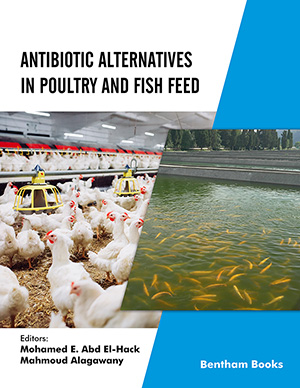Abstract
Background: The rising concern with environmental preservation has led to increasing interest in biodegradable polymer composites from renewable sources, such as cellulose and its derivatives. The use of nanocellulose is an innovative food packaging trend.
Discussion: This paper presents an overview and discusses the state of the art of different nanocellulose materials used in food and food packaging, and identifies important patents related to them. It is important to consider that before marketing, new products must be proven safe for consumers and the environment.
Conclusion: Several packaging materials using nanocellulose have been developed and shown to be promising for use as active and intelligent materials for food packaging. Other nanocellulose products are under investigation for packaging and may enter the market in the near future. Many countries have been adjusting their regulatory frameworks to deal with nanotechnologies, including nanocellulose packaging.
Keywords: Cellulose nanofibrils, bacterial cellulose, biopolymers, active packaging, nanomaterials, nanotechnology regulation.
[http://dx.doi.org/10.1016/j.biotechadv.2007.07.009] [PMID: 17884325]
[http://dx.doi.org/10.1016/j.carbpol.2011.08.078]
[http://dx.doi.org/10.2147/NSA.S64386] [PMID: 26604715]
[http://dx.doi.org/10.1016/j.foodhyd.2016.01.023]
[http://dx.doi.org/10.1007/s10570-012-9745-x]
[http://dx.doi.org/10.1021/ie9011672]
[http://dx.doi.org/10.1186/1556-276X-6-417] [PMID: 21711944]
[http://dx.doi.org/10.1201/b16496]
[http://dx.doi.org/10.1002/anie.201001273] [PMID: 21598362]
[http://dx.doi.org/10.1016/j.indcrop.2016.03.013]
[http://dx.doi.org/10.1021/bm060620d] [PMID: 17206781]
[http://dx.doi.org/10.1016/j.foodhyd.2013.07.012]
[http://dx.doi.org/10.2174/187221013804484854] [PMID: 22747719]
[http://dx.doi.org/10.3891/acta.chem.scand.03-0649]
[http://dx.doi.org/10.1016/j.carbpol.2010.04.073]
[http://dx.doi.org/10.1021/bm049300p] [PMID: 15762677]
[http://dx.doi.org/10.1016/j.carbpol.2014.09.020] [PMID: 25498637]
[http://dx.doi.org/10.3390/polym2040728]
[http://dx.doi.org/10.1007/s12221-011-0399-3]
[http://dx.doi.org/10.1002/(SICI)1097-0126(199811)47:3<291:AID-PI11>3.0.CO;2-1]
[http://dx.doi.org/10.1002/(SICI)1097-4628(19970509)64:6<1185:AID-APP19>3.0.CO;2-V]
[http://dx.doi.org/10.1007/s10570-014-0518-6]
[http://dx.doi.org/10.1021/bm101103p] [PMID: 21190378]
[http://dx.doi.org/10.1007/s10570-011-9533-z]
[http://dx.doi.org/10.1002/app.26946]
[http://dx.doi.org/10.1016/S0040-4039(00)77522-8]
[http://dx.doi.org/10.1007/s10570-013-9865-y]
[http://dx.doi.org/10.1039/CT8864900172]
[http://dx.doi.org/10.1007/BF02931175]
[http://dx.doi.org/10.1557/mrs2010.653]
[http://dx.doi.org/10.1016/j.carbpol.2013.08.018] [PMID: 24053844]
[http://dx.doi.org/10.3390/ijms160714832] [PMID: 26140376]
[http://dx.doi.org/10.1111/j.1365-2621.2004.tb13378.x]
[http://dx.doi.org/10.1016/j.foostr.2017.06.004]
[http://dx.doi.org/10.1016/S0011-2240(03)00046-4] [PMID: 12818211]
[http://dx.doi.org/10.1016/j.tifs.2003.09.004]
[http://dx.doi.org/10.1016/j.ijbiomac.2015.11.041] [PMID: 26627598]
[http://dx.doi.org/10.1007/s13197-014-1684-0] [PMID: 26344977]
[http://dx.doi.org/10.1016/j.progpolymsci.2013.05.008]
[http://dx.doi.org/10.1186/s40508-014-0023-0]
[http://dx.doi.org/10.1016/j.fpsl.2017.11.007]
[http://dx.doi.org/10.1016/j.carbpol.2011.09.066]
[http://dx.doi.org/10.1002/mame.201000444]
[http://dx.doi.org/10.1021/acssuschemeng.5b00600]
[http://dx.doi.org/10.1016/j.rser.2014.10.049]
[http://dx.doi.org/10.1007/BF03353849]
[http://dx.doi.org/10.1007/s10570-008-9244-2]
[http://dx.doi.org/10.1016/j.carbpol.2010.10.036]
[http://dx.doi.org/10.1007/s10570-010-9424-8]
[http://dx.doi.org/10.1007/s10570-010-9474-y]
[http://dx.doi.org/10.1002/pts.562]
[http://dx.doi.org/10.1039/C4RA07469F]
[http://dx.doi.org/10.1021/cm100477v]
[http://dx.doi.org/10.1016/S1466-8564(02)00012-7]
[http://dx.doi.org/10.1016/j.foodres.2010.10.037]
[http://dx.doi.org/10.1016/j.foodres.2009.09.006]
[http://dx.doi.org/10.1016/j.compscitech.2005.12.010]
[http://dx.doi.org/10.1016/j.carbpol.2012.05.025] [PMID: 24751032]
[http://dx.doi.org/10.1016/j.carbpol.2012.07.037] [PMID: 22944422]
[http://dx.doi.org/10.1016/j.carbpol.2010.02.037]
[http://dx.doi.org/10.1002/polb.21711]
[http://dx.doi.org/10.1016/j.jmbbm.2014.01.014] [PMID: 24508714]
[http://dx.doi.org/10.1016/j.carbpol.2014.03.063] [PMID: 24815411]
[http://dx.doi.org/10.1016/j.carbpol.2017.03.041] [PMID: 28457442]
[http://dx.doi.org/10.1016/j.carbpol.2014.06.048] [PMID: 25129796]
[http://dx.doi.org/10.1021/bm9011985] [PMID: 20055503]
[http://dx.doi.org/10.1007/s10570-014-0493-y]
[http://dx.doi.org/10.1021/bm0101769] [PMID: 12005534]
[http://dx.doi.org/10.1002/app.42397]
[http://dx.doi.org/10.1016/j.carbpol.2014.03.049] [PMID: 24906728]
[http://dx.doi.org/10.1016/j.carbpol.2016.10.073] [PMID: 27987811]
[http://dx.doi.org/10.1016/j.carbpol.2014.09.055] [PMID: 25498612]
[http://dx.doi.org/10.1016/j.carres.2010.10.002] [PMID: 21047623]
[http://dx.doi.org/10.1016/j.carbpol.2011.06.081]
[http://dx.doi.org/10.1016/j.foodhyd.2013.06.005]
[http://dx.doi.org/10.1016/j.lwt.2007.02.015]
[http://dx.doi.org/10.1016/j.lwt.2003.09.008]
[http://dx.doi.org/10.1016/j.foodhyd.2013.02.006]
[http://dx.doi.org/10.1016/j.ijbiomac.2016.07.107] [PMID: 27492557]
[http://dx.doi.org/10.1016/j.foodhyd.2015.08.003]
[http://dx.doi.org/10.1016/j.carbpol.2005.11.003]
[http://dx.doi.org/10.1016/j.carbpol.2016.09.062] [PMID: 27987882]
[http://dx.doi.org/10.1021/jf901459e] [PMID: 19711918]
[http://dx.doi.org/10.1016/j.meatsci.2014.06.031] [PMID: 25034453]
[http://dx.doi.org/10.1016/j.ejpb.2012.06.011] [PMID: 22750440]
[http://dx.doi.org/10.1016/j.carbpol.2013.12.035] [PMID: 24528763]
[http://dx.doi.org/10.2174/2212798409666171031114624] [PMID: 29086704]
[http://dx.doi.org/10.1016/j.lwt.2011.05.003]
[http://dx.doi.org/10.1016/S0309-1740(02)00121-3] [PMID: 22061613]
[http://dx.doi.org/10.1016/j.ijfoodmicro.2016.01.001] [PMID: 26803804]
[http://dx.doi.org/10.1016/S0168-1605(01)00560-8] [PMID: 11764886]
[http://dx.doi.org/10.1007/s11947-010-0465-7]
[http://dx.doi.org/10.1016/j.fm.2008.01.004] [PMID: 18355672]
[http://dx.doi.org/10.1007/s10570-014-0230-6]
[http://dx.doi.org/10.1016/j.meatsci.2010.04.016] [PMID: 20580990]
[http://dx.doi.org/10.1046/j.1365-2672.2001.01428.x] [PMID: 11556910]
[http://dx.doi.org/10.1007/s10570-014-0406-0]
[http://dx.doi.org/10.1016/S0924-2244(00)89112-8]
[http://dx.doi.org/10.1016/j.foodchem.2008.03.052]
[http://dx.doi.org/10.1016/j.phrs.2007.01.013] [PMID: 17324586]
[http://dx.doi.org/10.1016/j.tifs.2010.07.010]
[http://dx.doi.org/10.1016/j.foodhyd.2012.11.028]
[http://dx.doi.org/10.1016/j.carbpol.2016.10.080] [PMID: 27987818]
[http://dx.doi.org/10.1016/j.foodhyd.2012.11.034]
[http://dx.doi.org/10.1021/jf503207s] [PMID: 25198516]
[http://dx.doi.org/10.4236/snl.2011.11002]
[http://dx.doi.org/10.1016/j.fpsl.2017.01.007]
[http://dx.doi.org/10.15376/biores.7.2.2506-2552]
[http://dx.doi.org/10.1016/j.carbpol.2017.12.051] [PMID: 29352944]
[http://dx.doi.org/10.1016/j.carbpol.2017.09.087] [PMID: 29111045]
[http://dx.doi.org/10.1039/C1CS15188F] [PMID: 22170510]
[http://dx.doi.org/10.1088/0957-4484/24/7/075103] [PMID: 23358497]
[http://dx.doi.org/10.1080/1547691X.2017.1414339] [PMID: 29237319]
[http://dx.doi.org/10.1016/j.chemosphere.2016.12.105] [PMID: 28061425]
[http://dx.doi.org/10.1111/reel.12029]
[http://dx.doi.org/10.1016/j.yrtph.2015.06.016] [PMID: 26169479]
[http://dx.doi.org/10.1007/978-3-642-20595-8]
[http://dx.doi.org/10.1002/cite.201600076]
 38
38 3
3



















